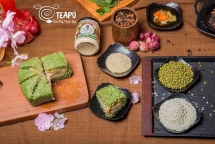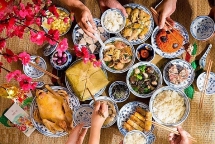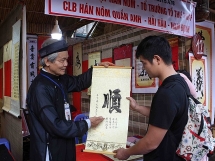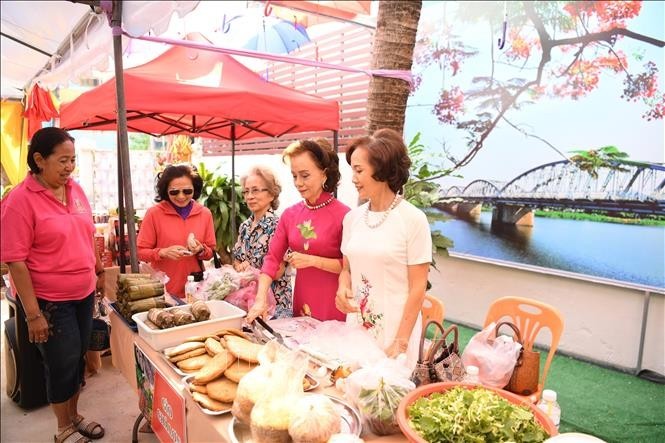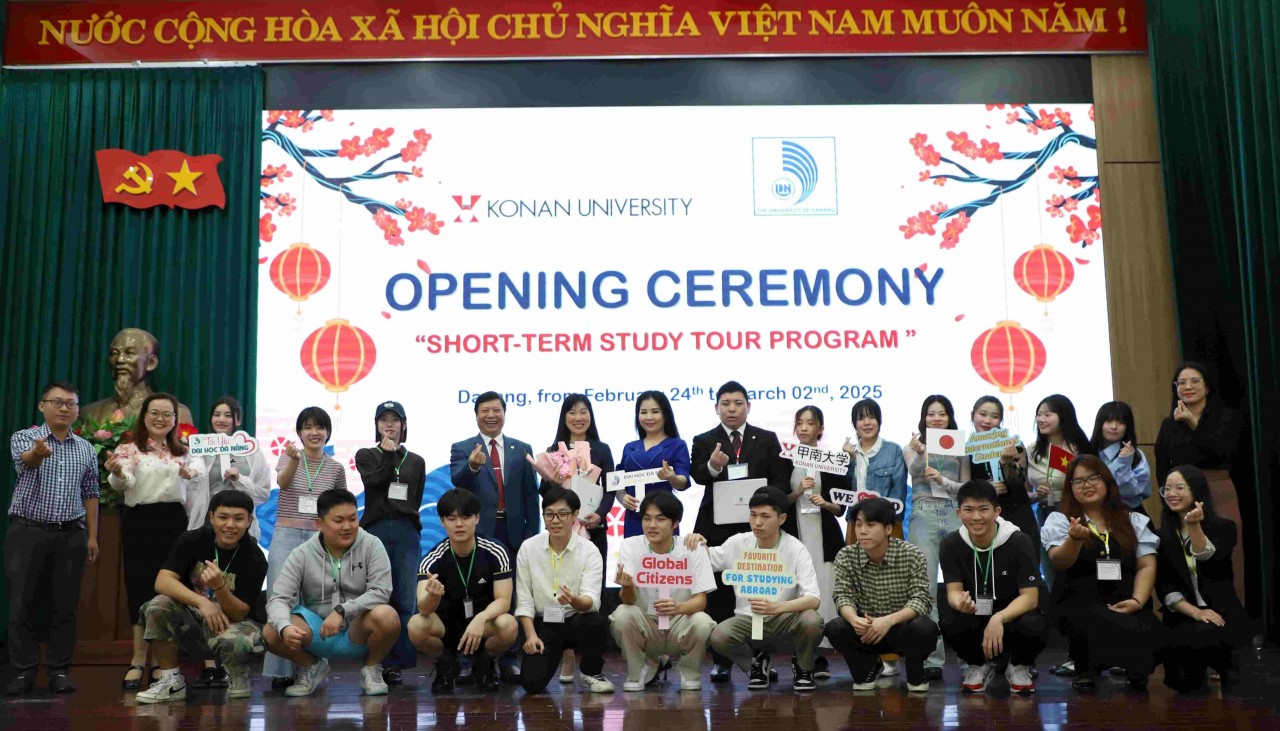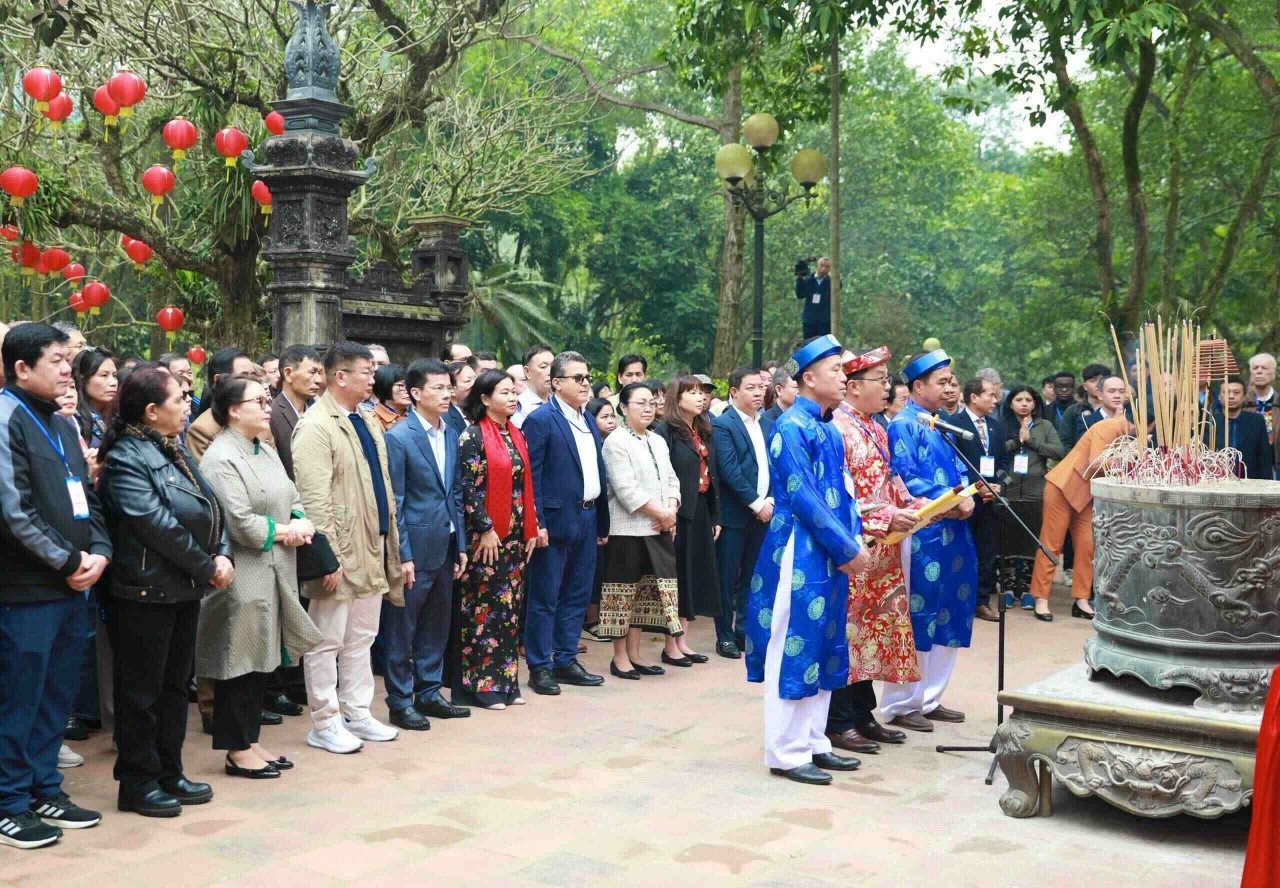Worship rituals during Lunar New Year in Vietnam
| Offerings for heaven and earth in Tet | |
| Healthy eating tips during Lunar New Year's reunion dinner | |
| Calligraphy festival honours morality |
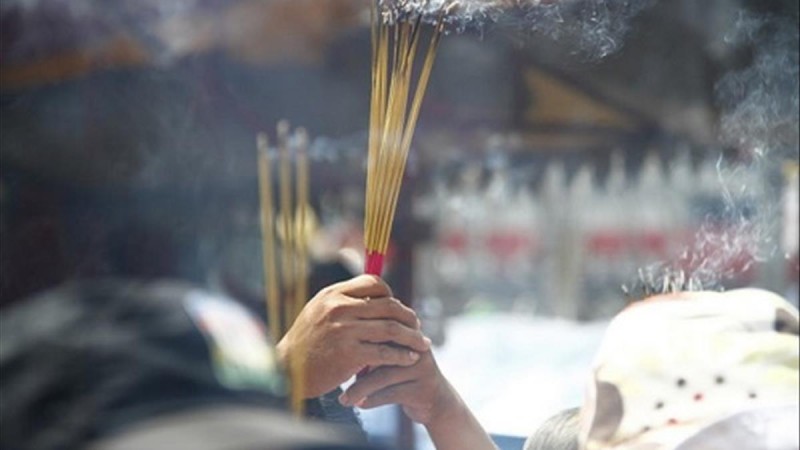 |
| Lighting incense has long been a holy act in the worship rituals (Photo: Lichngaytot) |
Traditionally, must-have offerings for almost every worship rituals in Vietnam includes flowers, votive papers, betel leaves and areca nuts, fruits, candies, as well as traditional dishes like sticky rice, boiled chicken, Vietnamese sausage, pickled onions, a bowl of soup, etc., and some wine. For Tet, however, Vietnamese people would also put the Tet’s iconic sticky rice cake or “banh chung” on the altar. A small pot of peach blossom or kumquat tree is also a culture-rich symbol of Tet holiday.
It’s a long-standing tradition in the country’s culture that the family’s oldest member is entitled to carry such holy act. Standing straight on barefoot, formally dressed, this person will light incense sticks, carefully stick them onto the joss-stick bowl then start to bow and pray.
The very first worship ritual marking the arrival of Tet is on Kitchen God Day, which falls on the 23rd of the last lunar month. In Vietnam culture, the three Kitchen Gods are the guardian of the kitchen who would bless each household and keep up the fire. There’s a belief that the three Gods will fly on a carp to Heaven on this day to meet Jade Emperor and report remarkable events and achievements of the family. Therefore, each Vietnamese family prepare a water bowl of three carps, paper clothing including hats, robes, boots, along with votive papers and a feast as honorable offerings toward the three Kitchen Gods and their ancestors. Once the incenses are burnt, house owners would release those carps back into the rivers, believing these carps are ascending to Heaven with the three Kitchen Gods on their back.
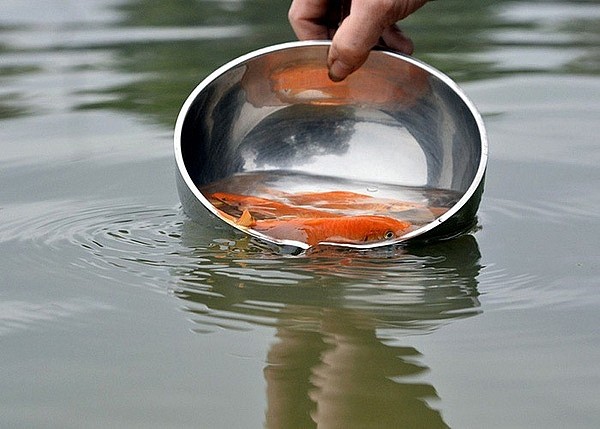 |
| Releasing the carps back to the river is part of must-do things in the Kitchen God Days in Vietnam Culture (Photo: Kinhtemoitruong) |
The tradition of celebrating Kitchen God Day is deeply rooted from a well-known legend revolving around a love triangle among 2 men and a woman - who would later become Kitchen Gods. Legend has it that Thi Nhi was one day cast out by her spouse - Trong Cao - after days of quarrel as they could not conceive any child. Leaving the house, Nhi desperately traveled to another land and met her second destined lover - Pham Lang and moved in with him. As time went by, Cao became regretful of his misbehavior, packed his back and went search for his dear wife. Days of wandering forced him to spend his last penny and knock on doors to doors to beg for food. One day, he met Nhi in the most unexpected way: at her new house. Nhi warmly welcomed Cao with food, the two talked for hours. Unexpectedly, Lang returned home. Afraid of getting caught, Nhi hid her ex-husband in the straw pile at the back of the house, what she’d never expected was that her husband fired the straw not long later, unintentionally burnt her ex-husband alive. As frightened as Nhi was, she jumped into the fire, sacrificed her life to save Cao. Without thinking, Lang also plunged himself into the blaze to save his wife.
When the Jade Emperor in Heaven found out about this tragic story, he titled them the Trio of Deities, or Kitchen Gods - who would become the guardian of each household. Annually, one week before the New Year, they would make a seven-day-trip to Heaven to meet Jade Emperor and return home at New Year’s Eve.
The last day of the year, or “Tat Nien” in Vietnamese is the chance for Vietnamese people to reunion and pay tribute to the deceased ones. According to Vietnam Culture, the male members would make a trip to the cemetery where their ancestors are buried, first to clean the graves, second to invite their ancestors’ souls home to enjoy the new year. At home, the worship activities take place both indoor and outdoor.
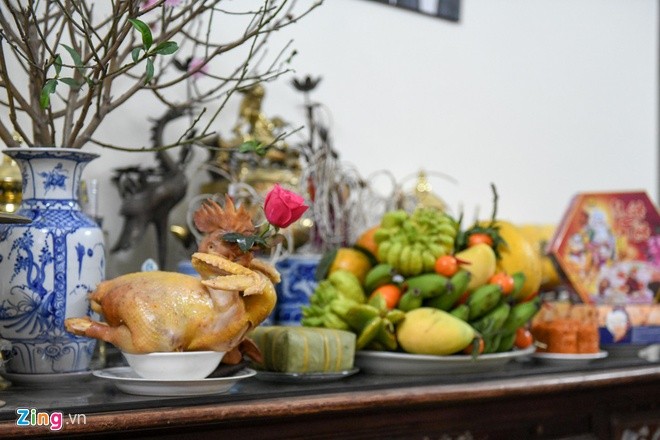 |
| Boiled chicken, sticky rice cakes, five-fruit tray are among the must-have offering in Vietnamese Lunar New Year (Photo: Zing.vn) |
Hours later, as the clock strikes at midnight ushering in the New Year’s Eve, each family would worship for the very first time of the new year. Culturally, wishes of good deeds, luck, safety, well-being, wealth for the loved ones are prayed in front of the altar. This is deemed a sacred moment when the Ying and Yang harmonize. Some families invite their first-footer, who is normally the “luckiest” person, to be the very first person to enter their house. It is believed that this person will bring along “a myriad things go accordingly” in the 12 months to come.
For Vietnamese people, the first, second and third days are the three most celebrative days in Tet. Unlike normal days, during these first 3 days of the year, once done cooking, Vietnamese people don’t eat right away but put on the altar a tray full of traditional foods which are sophisticatedly cooked and adorned, ready for another worship ritual. When the incenses are completely distinguished, the oldest family member will pray and bow for the second time before taking the tray down. On the third day, some families would throw an “ending-party”, known as “le hoa vang”, to see their ancestors off and end the Tet holiday, while other families would put it off until the 7th or 15th of the same month. All members of a big family gather, prepare a lavish meal together and enjoy it with laughter. In Vietnam Culture, all the offerings on the altar kept from the Kitchen God Days are taken down, fruits, candies are handed out to kids, votive papers and other paper-made objects alike are burned for the deceased ones to use in the other world.
Those above-mentioned worship rituals not only retain the enduring tradition and value of Tet passed down by the forefathers in Vietnam Culture but also prove the filial piety in each Vietnamese offspring.
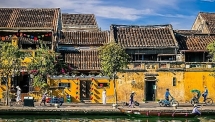 | Hoi An welcomes preservable solutions for national culture heritage Hoi An ancient town made a calling plan for variously innovative measures to preserve the cultural heritages during the 5-year term. |
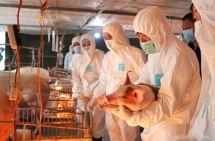 | Pork price was asked to be reduced by Vietnamese Ministry Minister of Agriculture and Rural Development Nguyen Xuan Cuong said that the ministry would request 17 big cattle-breeding firms to reduce pork price. |
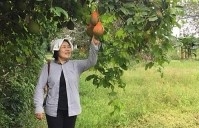 | Mayu Inno, Japanese friend helps Ben Tre to implement organic agriculture model Ms. Mayu Inno scoured herself to find the most difficult localities in Ben Tre province, attempting to “teach” local people do business, diversify livelihood right ... |
Recommended
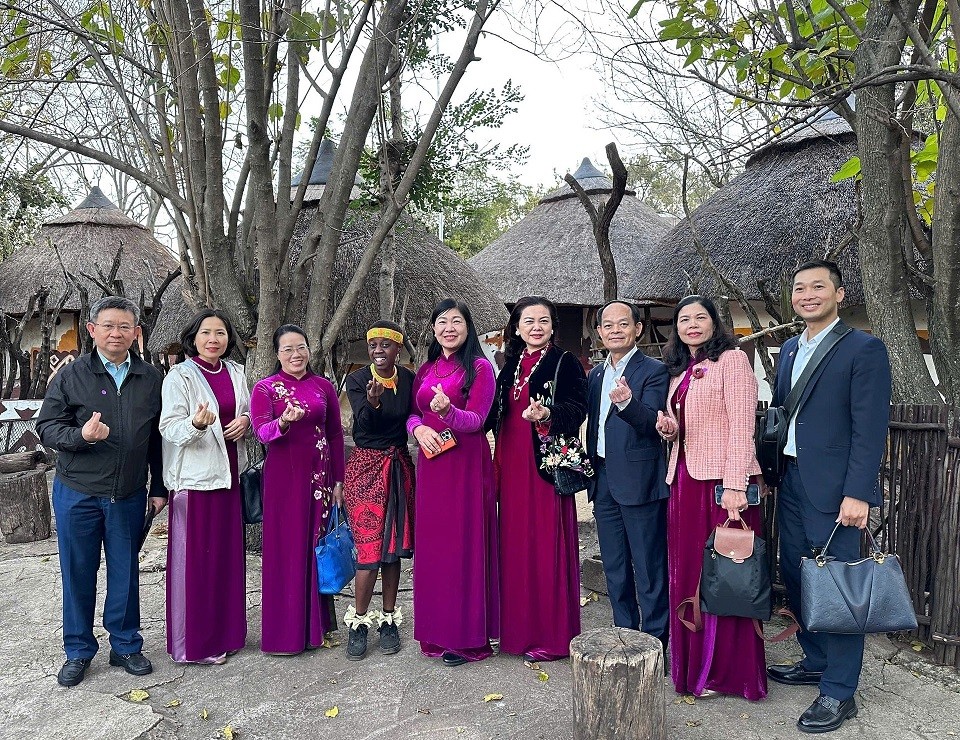 Viet's Home
Viet's Home
Hanoi, South Africa Strengthens People-to-people Exchanges, Expands Multi-sector Cooperation
 Viet's Home
Viet's Home
Hue City to Raise Awareness on Mine Accident Prevention
 Focus
Focus
Vietnam Leaves Imprints on the World Peacekeeping Map
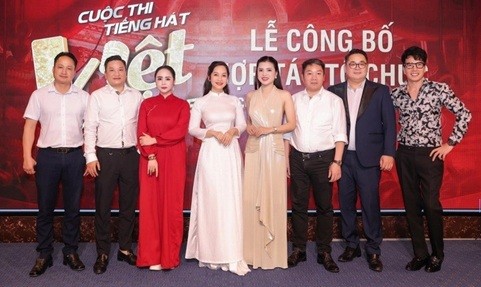 Viet's Home
Viet's Home
“Global Vietnamese Singing 2025” - Connecting Hearts Longing for Homeland
Popular article
 Viet's Home
Viet's Home
Vietnam’s People's Public Security Force Actively Contributes to UN Peacekeeping Operations
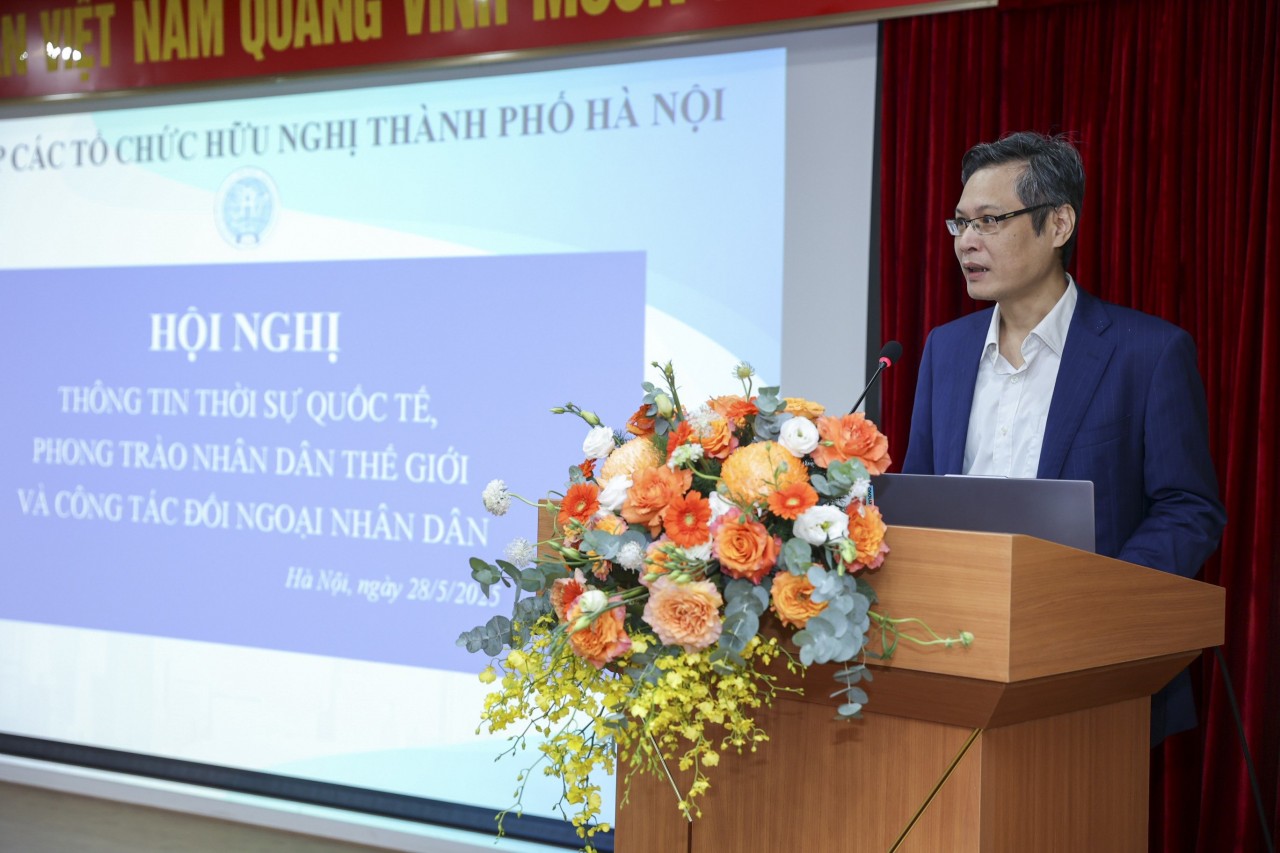 Viet's Home
Viet's Home
HAUFO Enhances Competence of People-to-People Diplomacy Personnel
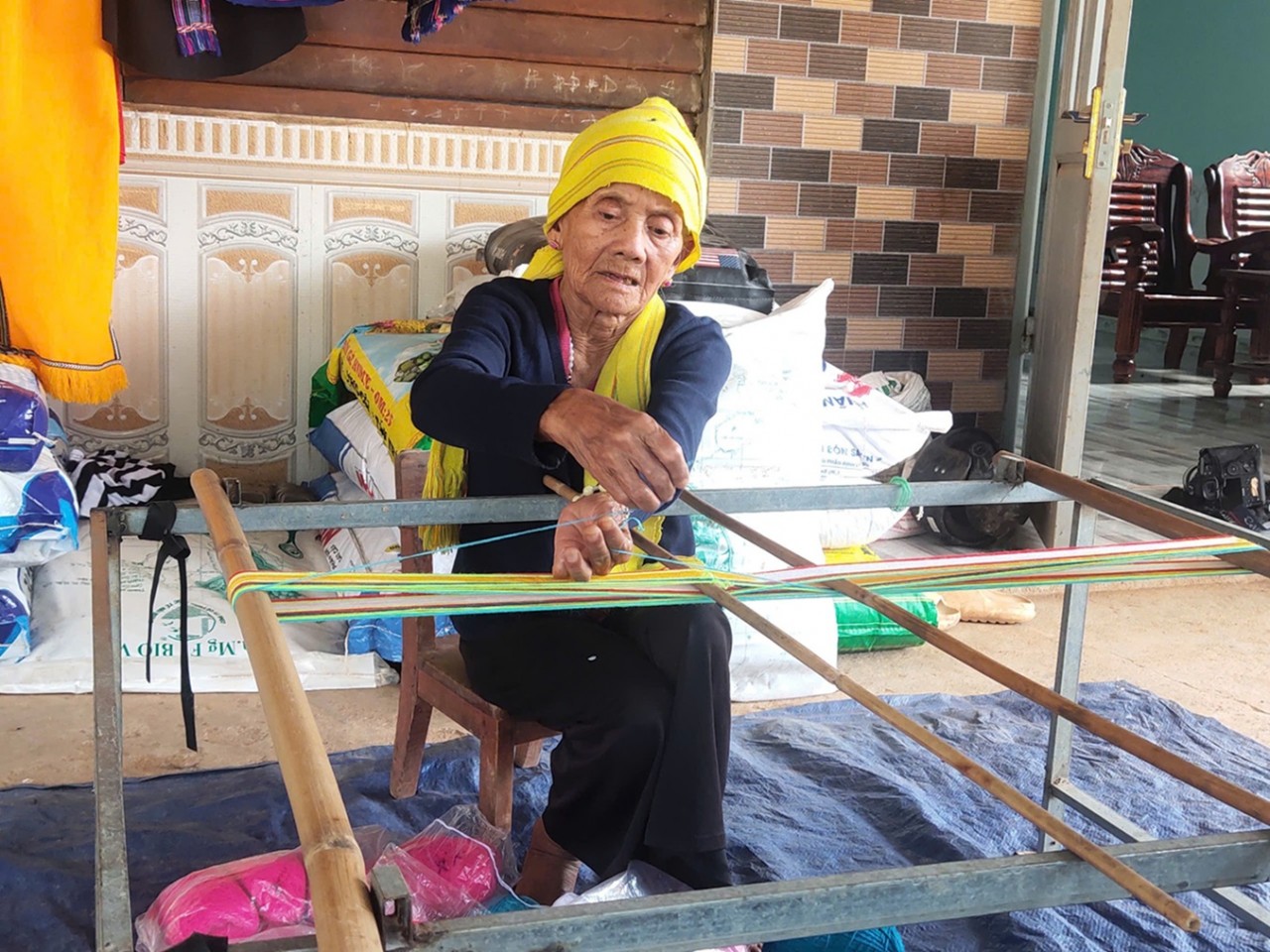 Viet's Home
Viet's Home
Hands that Reserve Da Long Brocade Craft
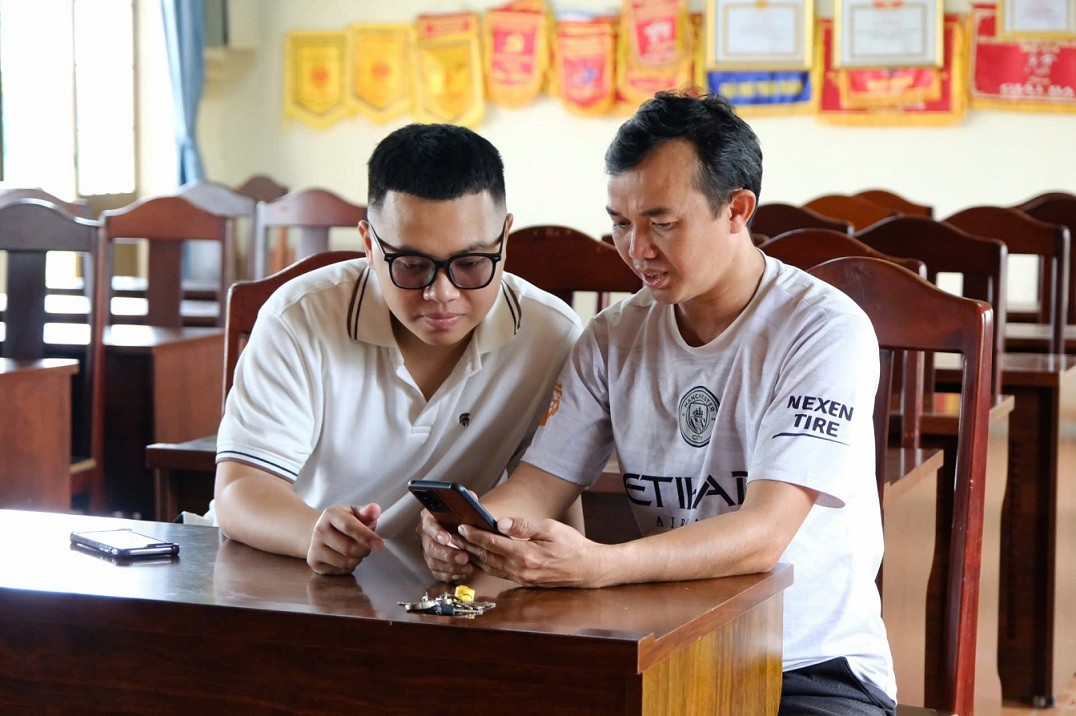 Viet's Home
Viet's Home

